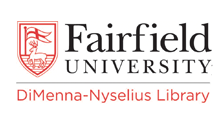Document Type
Article
Article Version
Publisher's PDF
Publication Date
7-2019
Abstract
Deceptive affectionate messages (DAMs) have been proposed to act as relational maintenance techniques and, as such, might be part of a greater repertoire of mate retention behaviors. We analyzed data from 1,993 Mechanical Turk participants to examine the relations between DAMs and mate retention, and whether these relations were mediated by the perceived risk of partner infidelity. In line with predictions, frequency of DAMs positively predicted general mate retention and cost-inflicting mate retention through the perceived risk of partner infidelity. In line with our nondirectional prediction, we also found that frequency of DAMs negatively predicted benefit-provisioning mate retention behaviors. In an exploratory mediation analysis of DAMs on benefit-provisioning mate retention via perceived partner infidelity, we surprisingly found that DAMs negatively predicted benefit-provisioning behavior due to the perceived risk of partner infidelity, suggesting that DAMs—but not benefit-provisioning mate retention—are deployed under the threat of partner infidelity. Overall, these findings suggest that DAMs might belong to a greater repertoire of mate retention (especially cost-inflicting) behaviors to thwart the possibility of partner infidelity.
Publication Title
Evolutionary Psychology
Repository Citation
Caton, Neil R. and Horan, Sean M., "Deceptive Affectionate Messages: Mate Retention Deployed Under the Threat of Partner Infidelity" (2019). Communication Faculty Publications. 60.
https://digitalcommons.fairfield.edu/communications-facultypubs/60
Published Citation
Caton, Neil R., and Sean M. Horan. "Deceptive Affectionate Messages: Mate Retention Deployed Under the Threat of Partner Infidelity." Evolutionary Psychology 17, no. 3 (2019): 10.1177/1474704919867902.
DOI
10.1177/1474704919867902
Peer Reviewed


Comments
Copyright 2019 The Authors
Creative Commons Non Commercial CC BY-NC: This article is distributed under the terms of the Creative Commons Attribution-NonCommercial 4.0 License (http://www.creativecommons.org/licenses/by-nc/4.0/) which permits non-commercial use, reproduction and distribution of the work without further permission provided the original work is attributed as specified on the SAGE and Open Access pages (https://us.sagepub.com/en-us/nam/open-access-at-sage).